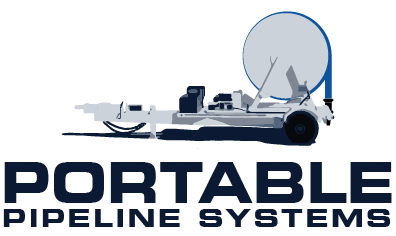Features And Designs Of A Lay Flat Hose
The right lay flat hose should be portable and durable enough to withstand any situation and be approved to transport potable water. They lay flat when not in use so that they can be rolled up and transported easily out in the field.
A critical feature of a lay flat hose is the amount of bend it can endure without breaking, or the curvature limit. Any amount of curvature can affect water pressure, and possibly cause bursting. Be sure to check your manufacturer’s specifications before laying your hose.
Watch A Lay Flat Hose Fail It’s Burst Test.
Industrial lay flat hoses such as the Mandals Aquaman are typically made of thermoplastic polyether-based polyurethane (TPU). This type of hose is a more flexible solution to transporting drinking water safely and effectively.
Aquaman Lay Flat hoses are used in everything from water utilities, well projects, shipping sector to festivals and other temporary events.
You may be more familiar with lay flat hoses made of Polyvinyl chloride (PVC). These much cheaper and flimsier hoses are designed mainly for home use, such as transporting water from your drains into your pool. So, a PVC lay flat pipe would not withstand the strain of permanently replacing a water main or responding to a flood.
Using A Lay Flat Hose During A Water Main Break
A lay flat hose suitable for potable water can fill in the gaps between water service breaks and repairs. We can wait for many things, but water isn’t one of them, and it’s critical to get sources flowing as fast as possible.

The above diagram demonstrates how a lay flat hose can bridge a water main break and repair. Repair crews will install a lay flat hose to transport water in place of the broken water main until repairs are complete.
With a quick response time, the public will hardly notice that water services were ever interrupted. And there’s no need to worry about unpredictable repair speeds.
Attaching Fittings
In industrial and emergency applications, you should train and prepare to operate your lay flat hose.
Below are the three major fittings/couplings that will go on the lay flat hose for wastewater.
Field Attachable Collar Hose Fittings For Lay flat hoses (Best)
Field Attachable Collars with Male Pipe Thread offers a stable connection and flexibility. You remove or add this fitting to any Female Pipe Thread connection as the shank easily slips into the hose and can be adjusted just by using an Allen wrench.
These fittings can be used with Camlocks, Storz, and Bauer ends, allowing the user to have greater flexibility out in the field.
Fire Hydrant Fittings or Internally Expanded Hose Couplings (Good)
Fire Hydrant fittings, Camlocks, and Storz can be internally expanded but usually go only up to 6”, and once you internally expand your end couplers, they are permanently on.
On the upside, the internally expanding hose is a very stable connection but offers no flexibility with mixing and matching couplings/fittings.
For example, if you have nothing but Camlocks, you will not be able to remove them and put them on Storz. But, keep in mind that these hose couplings are typically only used to transport water and may not be suitable for other substances.
Band-On Hose Couplings (Okay)
Band-On uses bans that tighten around the hose shank to secure a connection. They can be decent connections, but most people complain of leakage, and therefore they are not as common as they used to be. The pros are that it is the most low-cost solution and easy to get.
The cons are they cannot handle as much pressure, do not offer flexibility, and have a hard time holding up if they are just lying around in your garage or yard.
Conclusion
Lay flat hoses are an excellent water supply option for your home or business. Not only can you use this type of hose to provide access to clean drinking water, but it is also perfect for emergencies. If you would like more information on how a lay flat hose works and what the different fittings and couplings look like, contact us today!
Our team will be happy to help answer any questions about these types of hoses so that you know which one is right for your needs. We’re confident we have just the product – whether you need a permanent solution or something temporary.
Need more help choosing the right Lay Flat hose for your needs? Get a quote!



 Sales Office Location
Sales Office Location
 sales@portablepipelinesystem.com
sales@portablepipelinesystem.com